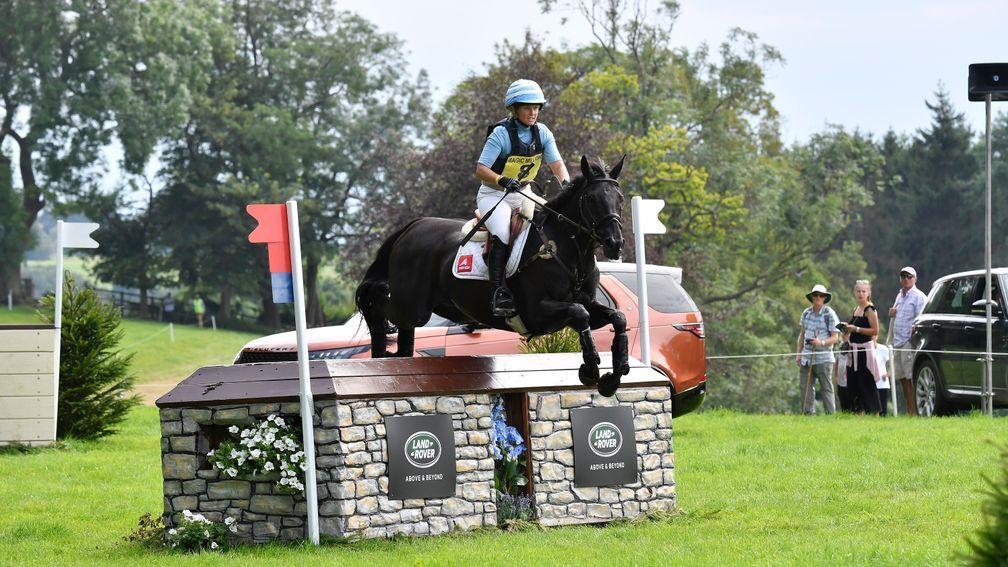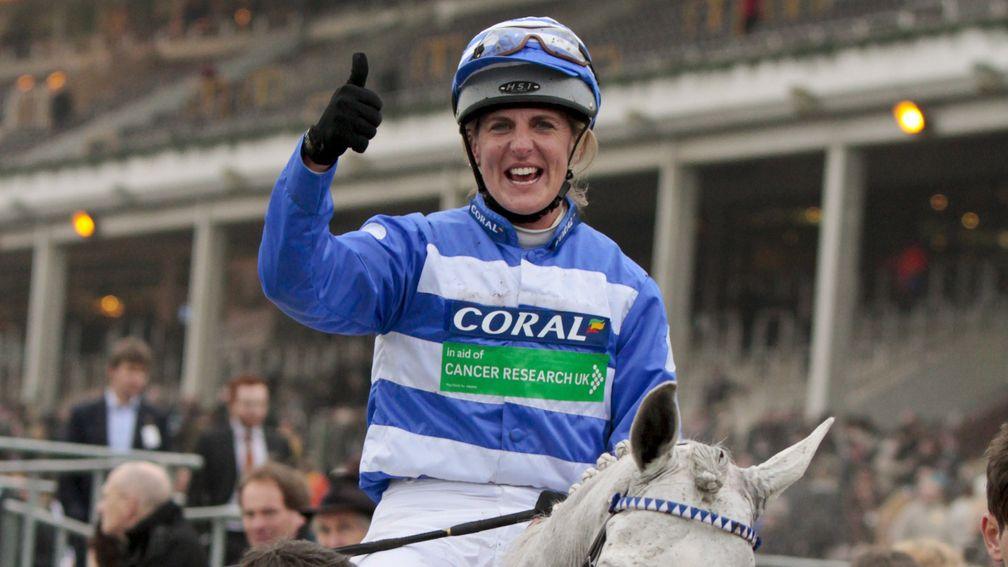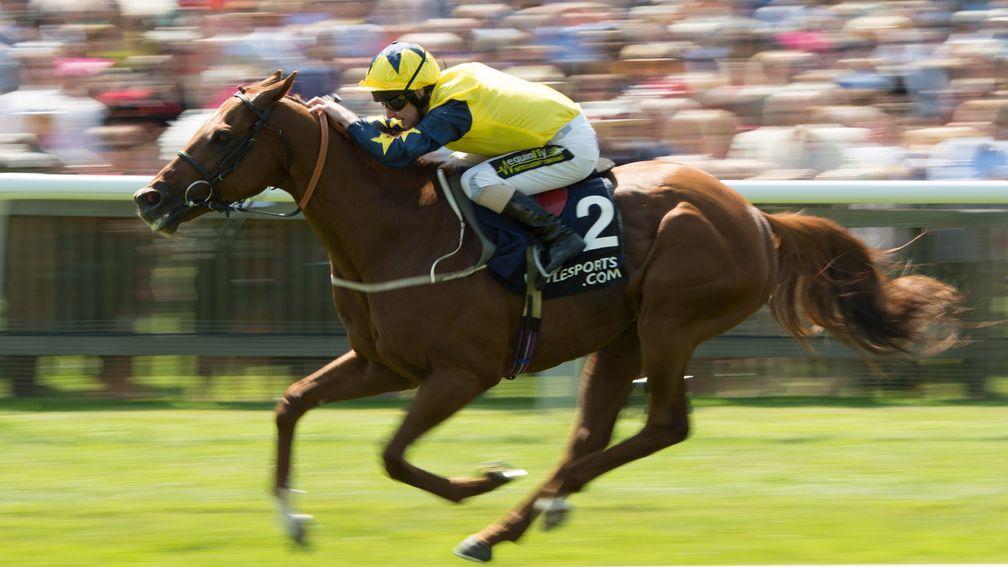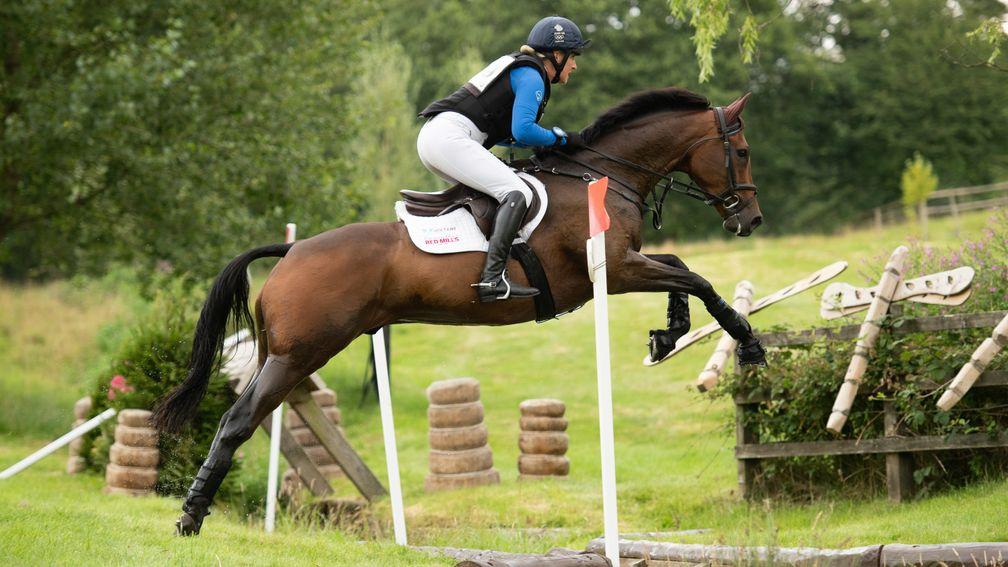Versatility of thoroughbreds continue adding to the world of eventing
Tom Peacock looks at the impact racing has had in other equestrian disciplines

It is not only for the purpose of running in a straight line that thoroughbred genes are desired.
As results from the world of eventing continue to prove, some controlled minutes of dressage, a few miles of daunting lakes and obstacles across country and even a nimble round of showjumping are not beyond these most versatile of animals.
Last month’s festival at Gatcombe Park is a case in point; not only did David Cricket, a placed son of the wonderful chasing mare Lady Cricket, earn rave reviews from Tina Cook in winning the RoR and NTF retrained racehorse class, but the laureate of the main event also had her roots in racing.
Classic Moet, who claimed last year’s keynote prize at Badminton for the formidable New Zealander Jonelle Price, is regarded as the quickest in the business over cross country courses, and neither is she too shabby at other phases.
The name of her sire, Classic, is held in high esteem in the same circles, even if the sum of his efforts in two bumpers for Stan Moore in the early 90s hardly nodded to a future paved with gold.
"He came straight off the racetrack, bought privately," explains Steve Knowles, whose base at Beechwood Grange Stud in York once stood others including Jack Berry’s sprinter Paris House.
"He was by Alzao, one of the top sires in Coolmore, his pedigree was brilliant. His young stock came through, they were shown as foals in hand, all the shows in the country, won everything, Then they went under saddle, he had champion ridden horses at Wembley (Horse of the Year Show). Then they went point-to-pointing and eventing - he was absolutely brilliant for us."
Sport horses, or those used loosely for Olympic disciplines, hail from a variety of breeds but there is, in fact, a long history of importing thoroughbred blood into the eventing world in particular.
The likes of American giant Bold Ruler and 1972 Guineas winner High Top can still be traced in some pedigrees, while Master Imp, a son of a horse called Imperious who won races for Con Collins, is one of the most influential in the sphere. In wider cognisance, his claim to fame is siring High Kingdom, who carried Zara Tindall to a team silver at London 2012.
Sport Horse Breeding of Great Britain, an affiliate of the World Breeding Federation for Sport Horse and the keeper of the studbook, has between 15 and 20 approved thoroughbred stallions.
Most were unraced or fairly ordinary on the track, with the occasional throwback name such as prolific all-weather operator Aeroplane and Putra Sandhurst, who was eighth in Galileo’s Derby.
"These days, the breeders are crying out for more, and a lot of our stallion owners are looking for a good thoroughbred stallion but they’re quite difficult to find at the right price for the sport horse market," explains Marian Eydmann, grading and breeding secretary at the SHB.
Eventing offers scant prize-money and requires extensive training for a horse - they tend to peak at a time even jumpers would be considered superannuated - so Frankel-sized stud fees are not realistic.
Furthermore, a grant given by the Levy Board to provide subsidised covers by thoroughbreds was withdrawn in the late 90s due to financial pressures.
"Most of the ones we had would have been the National Hunt type, and perhaps not as many of them are around so much, anyway," Eydmann adds.
It is not at all unusual to mate a thoroughbred with a more conventionally-bred eventing mare but other breeders prefer to use 'warmbloods', a more specifically-bred sport horse group which includes Contendro, essentially the Galileo of eventing, who is a Holsteiner. The license to use artificial insemination gives the breeder even more choice.
This at least means that Classic, who died a few years ago, endures in cryogenic form.
"They’re the best thing there is for three-day eventing," says Knowles. "These warmbloods are gutless, aren’t they? We’ve had folks using his [frozen] semen this year. Luckily we’ve quite a few left."

"They’ve got that bit of blood that they gallop in a much easier way. As it takes us in the eventing world five years from scratch, if you’re lucky, to get to the top level, you want them to be there for a while if you’ve put all that time and effort in. Generally horses that can gallop and have the endurance side over a ten-, 11-, 12-minute cross-country course, they have a stronger chance of staying sounder."
One emerging stallion of note is Tajraasi, an unraced brother of Faugheen and Samcro’s sire Germany, now at eventing’s poster couple Tom March and Piggy French’s base in Northamptonshire. Meanwhile SHB’s newest member will shortly be Universal, a dual Group 2 winner for Mark Johnston, who has moved to Groomsbridge Stud near Newmarket.
Although his entrance to the sire ranks in 2014 piqued little interest in the rarefied society of racing, Universal’s transition to dual-purpose seems to have been roundly welcomed.
Given the Sisyphean task facing so many middle-distance horses at stud, aside from the absolute elite, perhaps there are opportunities for a few to flourish in this different world. It just might take a few more years to find out what they’re made of.

The view of an Olympian
As a daughter of much-missed trainer Josh Gifford and brother of a Grade 1-winning handler in Nick, Tina Cook admits she is "a bit biased" when it comes to assessing the potential of thoroughbreds for eventing.
Yet her opinion comes with significant gravitas. The 49-year-old has three Olympic medals and is a multiple world and European champion.
"Some people find them too buzzy to ride but it’s what I’ve been brought up with and it’s what I love - to have that engine and speed across country," she says.
"When you ride a warmblood that lacks that turn of foot and endurance and that will to gallop, they might feel very flash in other ways but not from galloping.
"It’s getting a lot more fashionable now and people are realising that there are a lot of discarded horses out of training, they’re reasonably inexpensive to purchase and if you’re lucky there are some that can be retrained.
"It’s about getting one with the right temperament and giving them time. They can’t be rushed, whether they’re three or ten, they need the understanding and that time to convert their brain and knowledge into a different discipline.
"It’s a minimum six months in my mind but it can take up to a year. Some have to accept that their body is able to change to doing different things and using different muscles."
One of the mainstays of Cook’s yard at Findon has been Star Witness, who was claimed for £9,500 from the Doncaster Spring Store Sale in 2008.
"He was a Witness Box, and my mum bought him as a three-year-old," says Cook. "She just bought him as a project, I started playing around with him, realised he jumped, said, 'Don’t send it racing’ and found some owners.
"She didn’t give much money, nobody was particularly interested, and he was made into a top-class horse.

In David Cricket, a seven-year-old bred by the late David Johnson, she just might have her next marquee performer.
"He came from Alan King, a fantastic trainer, and Philippa Cooper, who owned him," she explains. "They decided after three runs that he wasn’t going to be a superstar so took him out of training.
"That has made my job an awful lot easier because he’s a relatively young horse. It’s taken him a while to learn a technique, but he has a fabulous brain and enjoys what he does.
"He’s got a lot to learn but the way he’s taking it in his stride, he doesn’t get stressed out of it and he enjoys the attention. That will take him a long way in the sport that I do. He thinks it’s all a bit of a game and he loves it."
If you enjoyed reading this, you might also like...
Logician seals a superb St Leger meeting for versatile granddam Tantina
Smart handicapper War Diary tops bill as two lots sell at Goffs Champions Sale
Invincible Spirit statue honours sire's sterling service to Irish National Stud
Published on 15 September 2019inFeatures
Last updated 10:59, 19 September 2019
- 'I'd rather do four or five right than maybe eight or ten wrong' - Goffs-bound filly leads Gallagher's select squad
- 'To me, to win a seller is as good as winning the Derby' - Hazy keeping the dream going for Alan Smith
- Michael Owen-bred Newmarket winner It Ain't Two has team dreaming of Royal Ascot
- Oh, Gino took the stage all right but Walk In The Park and Authorized stole their share of Aintree limelight
- 'You sometimes forget they're stallions' - meet up-and-coming eventing stars Galileo Dance and Galileo's Secret
- 'I'd rather do four or five right than maybe eight or ten wrong' - Goffs-bound filly leads Gallagher's select squad
- 'To me, to win a seller is as good as winning the Derby' - Hazy keeping the dream going for Alan Smith
- Michael Owen-bred Newmarket winner It Ain't Two has team dreaming of Royal Ascot
- Oh, Gino took the stage all right but Walk In The Park and Authorized stole their share of Aintree limelight
- 'You sometimes forget they're stallions' - meet up-and-coming eventing stars Galileo Dance and Galileo's Secret